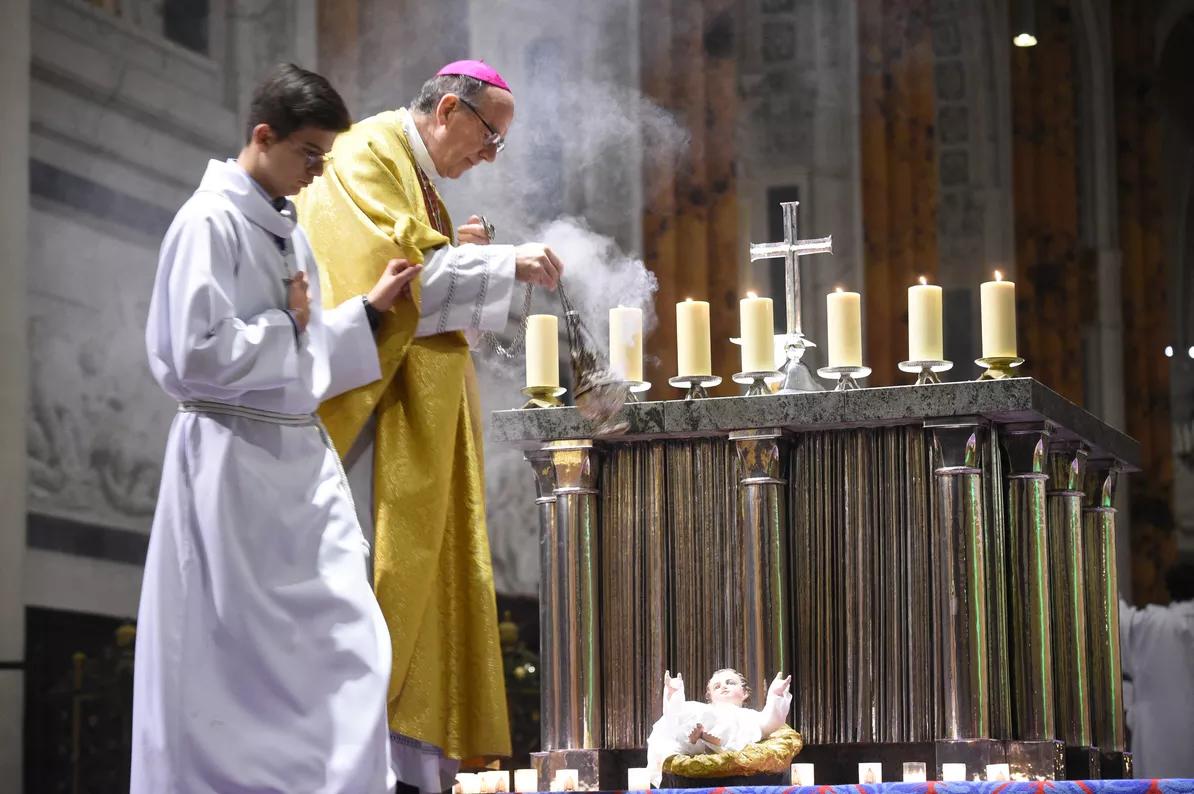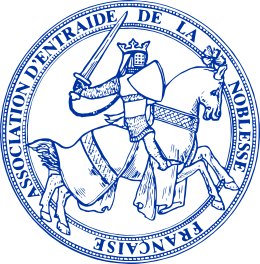News

Le Figaro: "Yann Raison du Cleuziou: "Juniors have a doubly minority experience of Catholicism""
INTERVIEW- Around 11% of French people attend Christmas mass, compared with 2% every Sunday. The sociologist of religions analyzes the dynamics at work in the country and the younger generations' relationship with faith.

Mgr Philippe Christory celebrates midnight mass at Notre-Dame Cathedral, Chartres, on December 25, 2022. JEAN-FRANCOIS MONIER / AFP
Yann Raison du Cleuziou is professor of political science at Bordeaux University. Latest book: À la droite du Père. Les catholiques et les droites de 1945 à nos jours (with Florian Michel, Éditions du Seuil, 2022).
How many French people go to Christmas mass?
Less than 2% of the French population attend mass on a weekly basis, while seasonal mass attendance, i.e. for major holidays such as Christmas, mobilizes more like 11%, i.e. around 5 to 6 times more. At least, that's what the June 2016 Bayard-IPSOS survey showed, and the numbers must have settled down since then. This discrepancy in the pace of practice was noted in the early days of the sociology of Catholicism by Gabriel Le Bras and Canon Fernand Boulard. They described episodic parishioners as "seasonal conformists". Seasonality refers to the temporality of their religious needs, both dependent on rites of passage between the seasons of life (baptism, first communion, marriage, funerals) and the feasts marking the crossing of the seasons of the year (Christmas, Easter, Assumption, All Saints).
" Seasonal conformists " hardly seems an expression of esteem...
The expression is pejorative: this intermittent consumption of rites is less a manifestation of spirituality than of sociability. In the 1960s and 1970s, the clergy blamed the "gregarious" and "pagan" nature of these "irregulars" to encourage more authentic evangelization. The Dominican friar and sociologist Serge Bonnet fought against this pastoral approach. He proposed replacing the label coined by Le Bras and Boulard with the far more positive "festive Christians". He showed the depth of human experience involved in festivities, with their mingled sacred and secular dimensions. Having also observed the communism of Lorraine's workers, he was convinced that intermittence was the norm for commitment among the working classes. For Bonnet, the higher standards required would discourage seasonal workers and turn the Church into a sect.
What are the links between the " festive " and the more " zealous " messengers ?
The link is increasingly tenuous, for a variety of reasons. The universe of regular churchgoers is increasingly urban and differentiated from the rest of the population. As society becomes more secularized, the Church recomposes itself around those who remain, and these have a more elitist and conservative profile. It's in the families of what I call "observant Catholicism" that the transmission of the faith from one generation to the next has been most successful. The upper social classes are obsessed with passing on their cultural capital, and faith is a major dimension of this, which also played a part in this result.
Residual religious vocations come from this universe, and no longer from the rural working classes, as was still the case in the 1960s. As a result, the mass experience is increasingly strange for the "festifs": they have less and less mastery of its religious and social codes. Often, a practising grandmother remained in the family to maintain a familiar link with the Church, which helped to perpetuate religious baptisms and marriages. With his death, the link to Catholicism was broken.
Is this proportion of French churchgoers continuing to fall ? Hasn't there been a resurgence in recent years ?
From a statistical point of view, Catholicism continues to collapse. At the end of the 1950s, over 90% of children were baptized within 3 months of birth. Today, the rate is below 20%. The rise in adult baptisms cannot compensate for such a decline. According to the 2018 EVS (European Values Study) survey, in forty years, declared religious affiliation has fallen from 70% to 32% of the population, and 38% of people now declaring no religion attended mass at least once a month at age 12. The French are totally unaware of the stakes involved in this evolution, since indifference is both what encourages and makes detachment invisible.
Paradoxically, however, this context is not incompatible with a feeling of revival shared by churchgoers. By becoming a minority, Catholicism is regaining in intensity and convictional homogeneity internally. Many families feel that with the new generation of priests, liturgy and preaching have more depth.
Their faith life is based on lay-initiated movements, which explains their resilience in the face of the many crises experienced by the clergy (sexual abuse, etc.). For older Catholics, this evolution is a step backwards. It's an error of perspective. Young priests are more likely to wear cassocks today, just as young Jews wear yarmulkes and Muslim women wear veils. In a context of advanced secularity, religious minorities are asserting their difference and marking their boundaries to resist erasure.
Is Catholicism still the leading religion in France ?
We've just seen, with the reopening of Notre-Dame, how central Catholicism remains to French culture. Its imprint on our heritage is such that it gives partial form to the feeling of national unity. But then, I think the importance of "living" Catholicism now depends first and foremost on generational affiliation. Seniors have a doubly majority experience of Catholicism. They are in the majority as Catholics in their age group, and they are in the majority as sensitives in the Church, because the age pyramid of churchgoers is inverted.
Juniors have a doubly minority experience of Catholicism. They are in the minority as Catholics among their generation. The 2018 EVS Survey counts 15% Catholics among 18- to 29-year-olds, closely followed by 13% Muslims. They are also a minority in church structures. Seniors still live in France's majority religion; juniors already live in France's leading religious minority. This explains why their religious expectations are so opposed. At Christmas dinner, for example, there are a few religious topics to be avoided between grandparents and grandchildren.
Read the article on www.lefigaro.fr
By Eugénie Boilait
Published December 25, 2024









